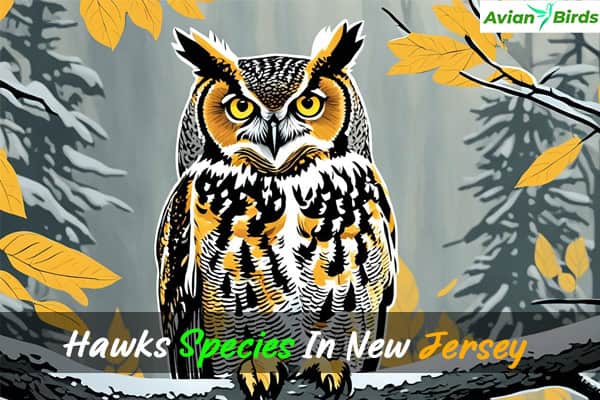8 Types of owl in New Jersey (With Pictures)
Are you curious about owls? You’ve come to the right spot! New Jersey is a great place for these fascinating birds, with many owl species living here. You’ll learn about the 9 types of owls in New Jersey, from the big Snowy Owl to the hidden Long-eared Owl.
Common Hawk Species Owl in New Jersey
- 1. Barred Owl
- 2. Short-eared Owl
- 3. Snowy Owl
- 4. Northern Saw-whet Owl
- 5. Great Horned Owl
- 6. Eastern Screech-owl
- 7. Barn Owl
- 8. Long-eared Owl
- 9. Northern Hawk Owl
1. Barred Owl
The Barred Owl is a fascinating bird in New Jersey’s woodlands. It has mottled brown feathers and a unique call. This owl is big and round, often seen in the Garden State. There are about 37 pairs in South Jersey and 75 in North Jersey.
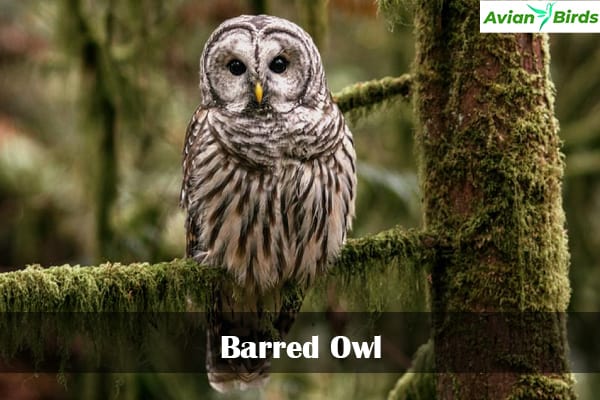
Identification and Call
This owl stands out because it doesn’t have ear tufts and has different patterns on its belly. Its barred owl identification is also helped by its deep call. You can hear it in the forests and wetlands of New Jersey.
Nesting and Diet
Barred Owl nesting habits include using old nests, tree holes, or nest boxes with little extra work. They eat a variety of things like small mammals, birds, reptiles, amphibians, and insects. This makes them key predators in their barred owl habitat.
Conservation Status and Range
The Barred Owl is considered “Least Concern” worldwide, but its numbers in South Jersey have dropped by 30%. This decline in New Jersey is mainly due to losing its barred owl habitat and it not liking areas with a lot of people.
| Barred Owl Fact | Value |
|---|---|
| Home Range Size | 86 to 370 hectares (213 to 914 acres) |
| Habitat Preference | Mature wet woods with large nesting trees |
| Conservation Status in New Jersey | Threatened |
2. Short-eared Owl
The short-eared owl is a medium-sized bird with short ear tufts. It has a light brown color and a whitish face. The eyes have dark patches, and its body is heavily streaked. It’s key to look for these features to tell it apart from others.
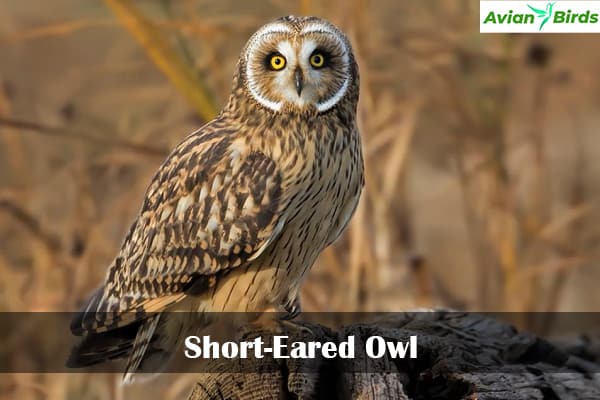
Appearance and Behavior
These owls are 13-17 inches tall and have a wingspan over three feet wide. They are quiet birds that use their great hearing and sight to hunt small rodents like voles. You can see them flying low over open areas at dawn and dusk.
Nesting Habits and Food Preferences
Short-eared owls build their nests on the ground in dry grasslands. They use old nests of other birds or cavities. Their diet includes small mammals, birds, snakes, and insects, with voles being their main food.
In New Jersey, these owls were once common but are now rare. The last confirmed nesting was in 1979. Yet, in 2008-2009, about a dozen short-eared owls were seen at Pole Farm in Mercer County. This shows they might return to the area.
3. Snowy Owl
The Snowy Owl is a standout among New Jersey’s owl species, known for its all-white look. This large bird visits the state in winter, coming from the Arctic tundra. It searches for food in the Garden State.

Nesting and Feeding Habits
Snowy Owls nest on the tundra, in areas with small dry crests. They are active both day and night, fitting well with the Arctic’s 24-hour sunlight. They hunt by scanning the landscape from a seated position, perfect for their coastal habitats in New Jersey.
Population Status and Threats
The Snowy Owl is a vulnerable species facing many threats. There are about 29,000 of them worldwide, but their numbers have dropped by 64% in the last 40 years. Climate change, hunting, and poisoning of their prey are big threats. Conservation efforts, like those by the Conserve Wildlife Foundation of New Jersey, aim to protect their habitat and help them recover.
| Statistic | Value |
|---|---|
| Global Population Estimate | Around 29,000 individuals |
| Population Decline over 4 Decades | 64% |
| Locations to Spot Snowy Owls in NJ | Island Beach State Park, Edwin B. Forsythe NWR, Cape May Lighthouse area, Sandy Hook, Barnegat Lighthouse |
If you see a Snowy Owl in New Jersey, keep a safe distance and don’t disturb it. These birds are a winter wonder. With conservation, we can keep them in the Garden State.
4. Northern Saw-whet Owl
The Northern Saw-whet Owl is one of the smallest owl species in the world. It lives in New Jersey’s forests at night. This little owl is about 8-10 inches long and makes a unique “too-too-too” sound.

The Tiny Nocturnal Hunter
This owl has a soft, mottled brown back and a whitish face. Its underparts are speckled, helping it hide in trees. Despite being small, it’s a great hunter. It eats small mammals like mice and voles.
Breeding and Feeding Ecology
Saw-whet owls nest in tree holes or old woodpecker nests. They don’t build their nests. They like to stay hidden because bigger owls might eat them. In places like Cape May, you can see them during migration.
Owl banding projects help scientists protect these owls. They are rare but common in northern forests. Knowing how they live helps us protect these night birds.
5. Great Horned Owl
The Great Horned Owl is a fascinating bird found in New Jersey. It has grey-brown feathers, a red-brown face, and big ear tufts. Its hooting calls are a symbol of the state’s bird life.

Appearance and Vocalization
This owl’s looks are impressive, and so are its sounds. It makes a “hoot-hoot-hoot-hooooo” call at night. These calls help it find a mate, mark its territory, and talk to its young.
Great Horned Owls also make screeches, barks, and hisses. These sounds show how they feel or what they’re doing.
Diet and Hunting Behavior
The Great Horned Owl is a top bird hunter. It eats many animals like rabbits, geese, and even skunks. Its sharp eyes and ears help it catch prey with ease.
These owls swoop down from high places to grab their food. They use their strong talons to catch their prey off guard.
| Prey | Hunting Technique |
|---|---|
| Rabbits, Geese, Groundhogs | Swooping down from perches, using powerful talons |
| Other Birds | Listening for prey, then pouncing with precision |
| Skunks | Catching them unawares, immune to their spray |
6. Eastern Screech-Owl
The Eastern screech owl is a common owl species in New Jersey. It has a stocky build and “fake” ear tufts. Its plumage can be gray or reddish-brown. It stands 7-10 inches tall and has a wingspan of 18-24 inches.

Identifying the Screech-Owl
It’s easy to spot the Eastern Screech-Owl because of its unique look. Its “fake” ear tufts are a clear sign. The owl’s color can change, showing up as gray or reddish-brown. This helps it live in different places.
Habitat and Nesting
The Eastern Screech-Owl lives in many wooded areas, even in cities and suburbs. It nests in tree holes or man-made structures like streetlamps. This makes it a common bird in many New Jersey neighborhoods.
| Eastern Screech-Owl Traits | Key Facts |
|---|---|
| Weight | 6-8 ounces |
| Wingspan | 18-24 inches |
| Height | 7-10 inches |
| Lifespan (in the wild) | Approximately 14 years |
| Survival Rate of Young | 30-50% from one year to the next |
7. Long-eared Owl
In New Jersey, the Long-eared Owl is a rare sight. It’s known for its long ears and cat-like face. This owl lives in dense pine forests and wooded areas, making it hard to spot.
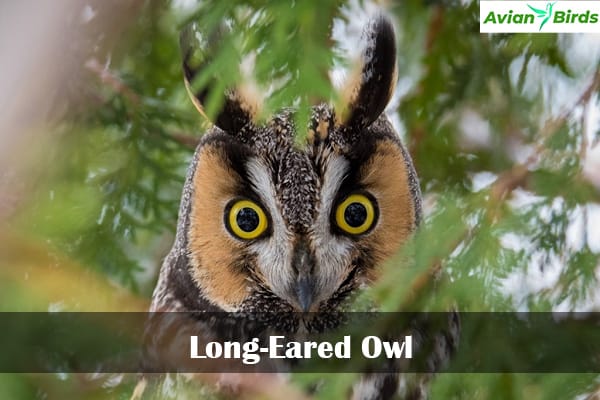
Long-eared Owls are interesting birds. They like to roost together and have special ways to hide and hunt at night. Their social behavior and camouflage skills make them experts in their habitat.
Check Our Previous Articles:
8. Barn Owl
The Barn Owl is another unique owl in New Jersey. It’s known for its heart-shaped face and silent flight. With its light and dark colors, it stands out.
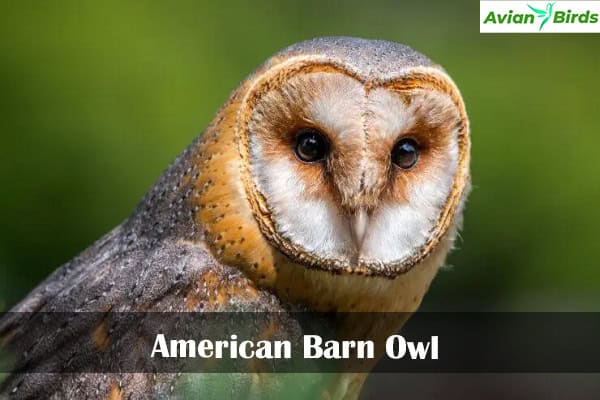
Barn Owls live in many places in New Jersey, like open fields and old buildings. They are called the “Ghost of the Night” because of their special looks and hunting skills. Birdwatchers love to see these owls.
| Characteristic | Long-eared Owl | Barn Owl |
|---|---|---|
| Identification | Distinctive long ear tufts, catlike facial features | Heart-shaped facial features, sandy-colored plumage with dark brown facial edges |
| Behavior | Secretive, roosts in loose clusters, excellent camouflage | Silent, ghostly flight, specialized hearing for efficient hunting |
| Habitat | Dense pine forests and wooded areas | Open habitats like grasslands, fields, and abandoned buildings |
| Distribution | Found in New Jersey during the winter months | Widely distributed across New Jersey |
The Best Places to Spot Owls in New Jersey
New Jersey has great spots for seeing owls. You can find them in protected parks, wildlife refuges, coastal areas, and forests. Some top places to see owls include:
- Liberty State Park, where Snowy Owls can be spotted during the winter
- Island Beach State Park and the Merrill Creek Reservoir, which also host Snowy Owls
- Forested areas and pine stands provide ideal habitat for Northern Saw-whet Owls and Long-eared Owls
- Grasslands and open fields that attract Short-eared Owls
Whether you’re an expert birder or just love nature, New Jersey’s varied landscapes are perfect for seeing owls. You can watch these amazing birds in their natural settings.
Final Thoughts
New Jersey is home to a wide variety of owl species, each with its own special traits and habits. This article has given a detailed look at the 9 owl types found in the Garden State. Whether you love birdwatching or just enjoy the beauty and mystery of owls, New Jersey is a great place to see them.
The state has many Barn Owls and some banded chicks, with most living along the southern coast. Meadow voles, a main food source for Barn Owls, are common in New Jersey’s different habitats. Even though some fall nests don’t succeed, the owls show their strength by having young birds join the breeding group.
If you’re lucky, you might see a Saw-whet Owl in autumn or watch a Barn Owl fly silently at night. Exploring New Jersey’s best spots for owl-watching is an exciting adventure. So, go out, check out the top owl-watching spots, and dive into the amazing world of these incredible birds.

